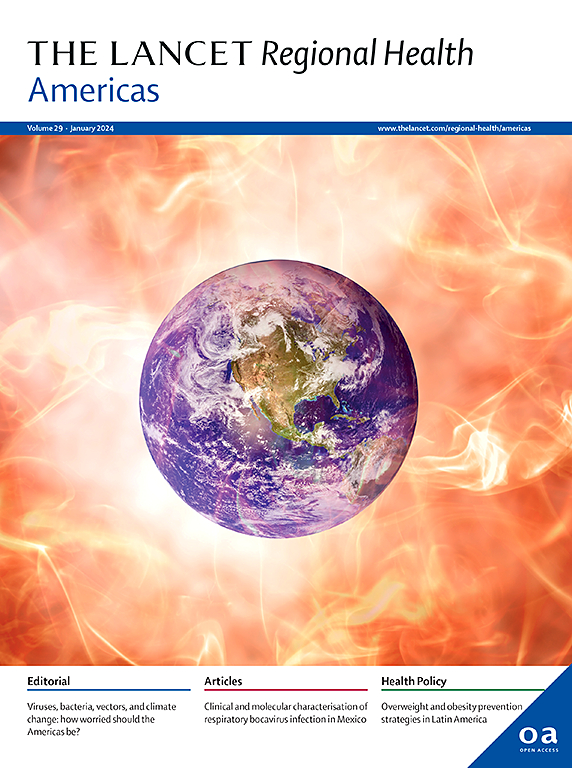老年痴呆症的危险因素和中年前的认知功能在美国的代表性人群为基础的研究
IF 7
Q1 HEALTH CARE SCIENCES & SERVICES
引用次数: 0
摘要
在美国,阿尔茨海默病是一个主要的健康问题,但大多数研究都集中在老年人身上。我们研究了已知的危险因素和血液生物标志物是否与中年前的认知有关。方法对全国青少年至成人健康纵向研究(Add Health)的数据进行分析。参与者于1994-95年(7-12年级)入学,并随访至2018年。我们横断面分析了加权调查和来自波IV和波v的生物标志物数据。我们测量了心血管危险因素、衰老和痴呆发生率(CAIDE)评分,包括年龄、教育程度、性别、收缩压、体重指数、胆固醇、身体活动和载脂蛋白E ε4等位基因(APOE ε4)状态。我们还测量了总Tau蛋白和神经丝光(NfL)、高敏c反应蛋白(hsCRP)、白细胞介素(IL)-1β、IL-6、IL-8、IL-10和肿瘤坏死因子α (TNF-α)。结果包括即时单词记忆、延迟单词记忆和向后数字广度。分析样样量为第四波4507 - 11449人,第五波529 - 1121人。第四波调查加权中位年龄为28(26-29)岁,第五波调查加权中位年龄为38(36-29)岁。第四波调查加权中位年龄约有一半为女性(分析样本48.4-52.1%),71.4-72.5%为白人,12.5-14.9%为黑人,9.3% - 10.2%为西班牙裔。在Wave V中,43.6-46.8%为女性,68.7-69.3%为白人,17.1%-20.0%为黑人,7.3%-9.6%为西班牙裔。CAIDE评分与第四阶段的所有认知测量相关。例如,在24-34岁的成年人中,CAIDE评分每增加1分,向后手指广度评分降低0.03个标准差(95% CI: - 0.04, - 0.02)。总Tau与波V中的即时单词回忆相关(β = - 0.13, 95% CI: - 0.23, - 0.04)。第四波hsCRP和IL-10以及第五波IL-6、IL-1β和IL-8也与较低的认知评分相关。阿尔茨海默病的主要危险因素早在24-44岁就与认知功能有关,这突出了美国早期预防的必要性。资助nih P01HD31921, U01AG071448, U01AG071450, R01AG057800, P30AG066615, T32HD091058, P2CHD050924。本文章由计算机程序翻译,如有差异,请以英文原文为准。
Risk factors for Alzheimer’s disease and cognitive function before middle age in a U.S. representative population-based study
Background
Alzheimer’s disease is a major health concern in the U.S., but most research has focused on older populations. We examined whether established risk factors and blood biomarkers are associated with cognition before midlife.
Methods
Data from the National Longitudinal Study of Adolescent to Adult Health (Add Health) were analyzed. Participants were enrolled in 1994–95 (grades 7–12) and followed through 2018. We cross-sectionally analyzed weighted survey and biomarker data from Waves IV and V. We measured the Cardiovascular Risk Factors, Aging, and Incidence of Dementia (CAIDE) score comprised of age, education, sex, systolic blood pressure, body mass index, cholesteroal, and physical activity and apolipoprotein E ε4 allele (APOE ε4) status. We also measured total Tau and Neurofilament light (NfL), high sensitivity C-reactive protein (hsCRP), Interleukin (IL)-1β, IL-6, IL-8, IL-10, and Tumor necrosis factor alpha (TNF-α). Outcomes included immediate word recall, delayed word recall, and backward digit span.
Findings
Analytic sample sizes ranged from 4507 to 11,449 participants in Wave IV and from 529 to 1121 participants in Wave V. The survey-weighted median (IQR) age was 28 (26–29) years in Wave IV and 38 (36–29) years in Wave V. About half of the survey-weighted Wave IV participants were female (48.4–52.1% across analytic samples), 71.4–72.5% were White, 12.5–14.9% were Black, and 9.3–10.2% were Hispanic. In Wave V, 43.6–46.8% were female, 68.7–69.3% were White, 17.1%–20.0% were Black, and 7.3%–9.6% were Hispanic. The CAIDE score was associated with all cognition measures in Wave IV. For example, among adults aged 24–34, each 1-point increase in CAIDE was associated with a 0.03 standard deviation lower backward digit span score (95% CI: −0.04, −0.02). Total Tau was associated with immediate word recall in Wave V (β = −0.13, 95% CI: −0.23, −0.04). Wave IV hsCRP and IL-10 and Wave V IL-6, IL-1β, and IL-8 were also associated with lower cognitive scores.
Interpretation
Key risk factors for Alzheimer’s Disease are linked to cognitive function as early as ages 24–44, highlighting the need for early prevention in the US.
Funding
NIH P01HD31921, U01AG071448, U01AG071450, R01AG057800, P30AG066615, T32HD091058, P2CHD050924.
求助全文
通过发布文献求助,成功后即可免费获取论文全文。
去求助
来源期刊

Lancet Regional Health-Americas
Multiple-
CiteScore
8.00
自引率
0.00%
发文量
0
期刊介绍:
The Lancet Regional Health – Americas, an open-access journal, contributes to The Lancet's global initiative by focusing on health-care quality and access in the Americas. It aims to advance clinical practice and health policy in the region, promoting better health outcomes. The journal publishes high-quality original research advocating change or shedding light on clinical practice and health policy. It welcomes submissions on various regional health topics, including infectious diseases, non-communicable diseases, child and adolescent health, maternal and reproductive health, emergency care, health policy, and health equity.
 求助内容:
求助内容: 应助结果提醒方式:
应助结果提醒方式:


